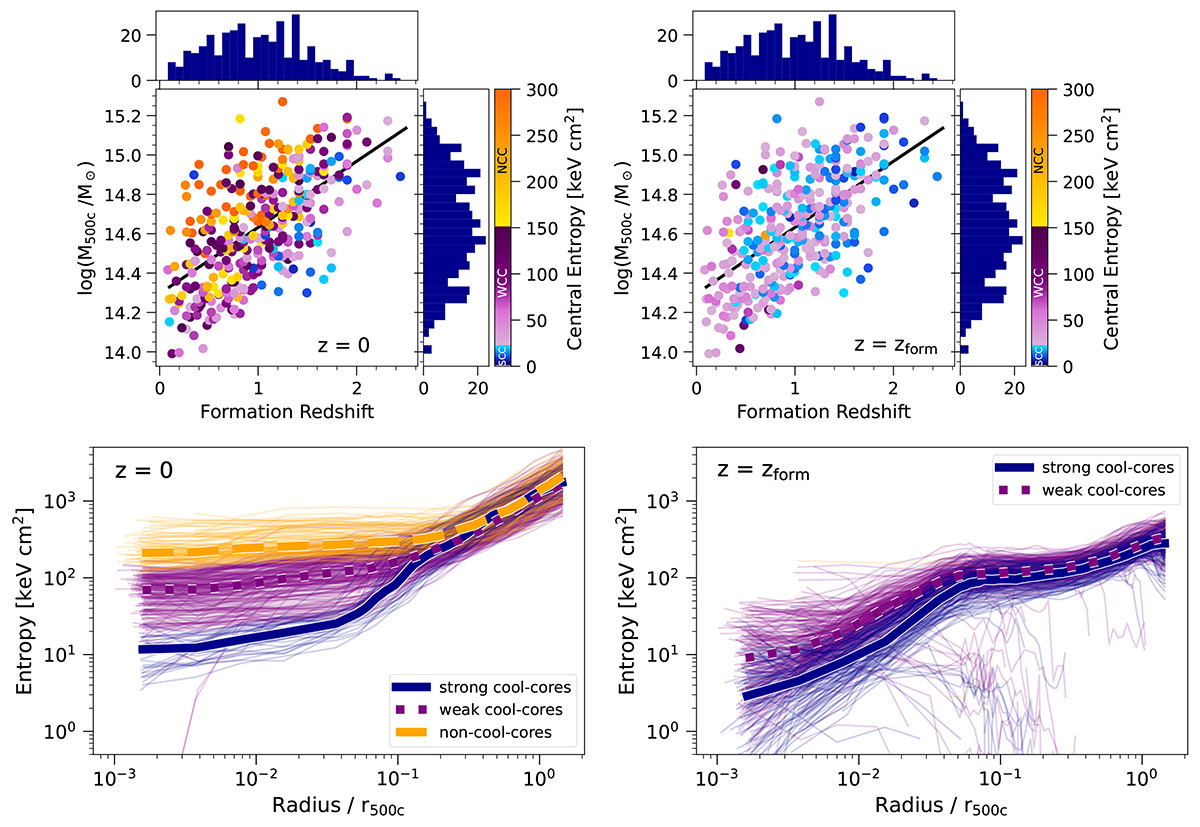Fig. 2.

Download original image
Correlation among halo mass M500c at z = 0, formation redshift, and cool-coreness in TNG-Cluster, across cosmic epochs. The formation redshift throughout this paper is defined as the redshift at which a cluster reaches a mass of 1014 M⊙. The upper panels show the correlation of formation redshift and the halo mass at z = 0. Symbols are color-coded by the central entropy of each halo at z = 0 (left plot) and at the formation redshift zform (right panel), with the color bar indicating the classification into NCC, WCC, and SCC clusters. Histograms of the distribution of formation redshifts and cluster masses are shown on the top and right panels, respectively. The lower plots present entropy profiles at z = 0 (left) and at zform (right) colored by core status. More massive halos form, i.e., reach the status of cluster, on average earlier than less massive halos. For a given halo mass, later forming halos are biased toward NCC states at z = 0. In addition, clusters form with low central entropy, with SCCs and WCCs having similarly shaped profiles exhibiting a prominent decline toward the core. According to TNG-Cluster, clusters are predominately born as CCs.
Current usage metrics show cumulative count of Article Views (full-text article views including HTML views, PDF and ePub downloads, according to the available data) and Abstracts Views on Vision4Press platform.
Data correspond to usage on the plateform after 2015. The current usage metrics is available 48-96 hours after online publication and is updated daily on week days.
Initial download of the metrics may take a while.


